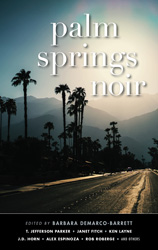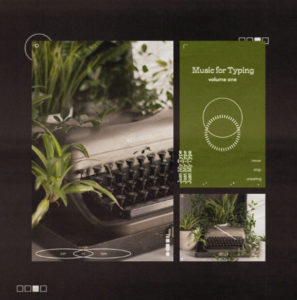Just came in….deadline is soon….
Re: Call for Submissions.
Deadline for Entries: January 31, 2008
Dear Colleagues,
Nominations are now being accepted for the third William Saroyan International Prize for Writing. This award, given by Stanford University Libraries in partnership with the William Saroyan Foundation, recognizes newly published works of fiction and non-fiction with a $12,500 award for the winner in each category. The prize is designed to encourage new or emerging writers and honor the Saroyan literary legacy of originality, vitality and stylistic innovation. While normally biennial, this third round of the award is on a triennial schedule, having been timed to coincide with the Saroyan Centennial celebrations taking place in 2008. For entry forms and more information on the prize, including entry forms and rules, visit the Saroyan website for prize info..
Entries must be received on or before January 31, 2008.
(Scroll down for a press release on the prize.)
Best regards,
Sam Petersen, for Stanford University Libraries
FOR IMMEDIATE RELEASE
Contact:
**Ms. Sam Petersen, Sam Petersen Associates:
(650) 854-5575, sampetersenpr@aol.com
William Saroyan International Prize for Writing to be Awarded in 2008
Award coincides with Saroyan Centennial celebrations
Stanford University Libraries, in partnership with the William Saroyan Foundation, announced today the launch of the third William Saroyan International Prize for Writing (Saroyan Prize). Intended to encourage new or emerging writers and honor the Saroyan literary legacy of originality, vitality and stylistic innovation, the Saroyan Prize recognizes newly published works of both fiction and non-fiction. A prize of $12,500 will be awarded in each of these categories, and the prize winners will be recognized publicly during Stanford’s Saroyan Centennial celebrations on September 5, 2008.
Literary fiction, including novels, short story collections, and drama, will be eligible for consideration for the Saroyan Fiction Prize. Literary non-fiction of any length is eligible for consideration for the Saroyan Non-fiction Prize, most particularly writing in the Saroyan tradition: memoirs, portraits and excursions into neighborhood and community. Entries in either category are limited to English language publications that are available for individual purchase by the general public. Entries must be received on or before January 31, 2008. Official entry forms and rules are available at http://saroyanprize.stanford.edu .
“The Saroyan Prize is an integral part of the library’s ongoing and active involvement with the Saroyan archive, but it also provides a wonderful opportunity for Stanford students and alumni, as well as literati everywhere, to interact actively with the emerging literary figures of our time.” said Michael A. Keller, Stanford University Librarian. “Such interaction is a distinguishing feature of a Stanford education. We are particularly pleased to be offering the prize during this centennial celebration of Saroyan’s birth, when so much attention is being given to Saroyan’s life and work.”
“The Saroyan Foundation is pleased to be involved in fulfilling Saroyan’s dream of establishing a writing prize to encourage and perpetuate the art he so loved,” said Haig Mardikian, President of the William Saroyan Foundation. “Saroyan not only had a great passion for writing, he was also an accomplished visual abstract artist; so it is particularly fitting that this award is being granted during the Saroyan Centennial celebrations where we are commemorating many of Saroyan’s artistic achievements.”
The first William Saroyan International Prize for Writing was awarded in 2003 to Jonathan Safran Foer for his novel Everything is Illuminated (Houghton Mifflin, 2002). The second Saroyan Prize, awarded in 2005, was the first to be offered for both fiction and non-fiction. The fiction prize was awarded to George Hagen for his novel The Laments (Random House, 2004); the non-fiction prize went to Mark Arax and Rick Wartzman for The King of California (Public Affairs, 2005).
William Saroyan, an American writer and playwright, is a Pulitzer Prize and Academy Award winner best known for his short stories about humorous experiences of immigrant families and children in California. Much of Saroyan’s other work is clearly autobiographical, although similar in style and technique to fiction. Saroyan was the fourth child of Armenian immigrants. He battled his way through poverty and rose to literary prominence in the early 1930s when national magazines began publishing his short stories, such as The Daring Young Man On The Flying Trapeze, My Name Is Aram, Inhale & Exhale, Three Times Three, and Peace, It’s Wonderful. Saroyan soon moved on to writing plays for Broadway and screenplays for Hollywood, including: My Heart’s in the Highlands, The Time of Your Life, The Beautiful People, and The Human Comedy.
The William Saroyan Foundation was officially founded by the author on December 30, 1966. Since then, distinguished professors, business executives and high-ranking government officials have accepted appointments to the Foundation’s Board of Trustees. Commencing in 1990, the Trustees set a goal of bringing together into one single archive his entire literary estate. A decision was finally made by the Trustees to offer Stanford University the assembled Saroyan Literary Collection with provisions that would safeguard in perpetuity one of the rare treasure troves in American literature, carrying on the legacy of Fresno, California’s own native son, William Saroyan.
Stanford University Libraries & Academic Information Resources supports the teaching, learning and research mandates of the University through delivery of bibliographic and other information resources and services to faculty, students and staff. It is tackling the challenges of the digital age while continuing the development, preservation and conservation of its extensive print, media and manuscript collections.
# # #



 Support Indie bookshops and this site by purchasing books through my BookShop
Support Indie bookshops and this site by purchasing books through my BookShop
